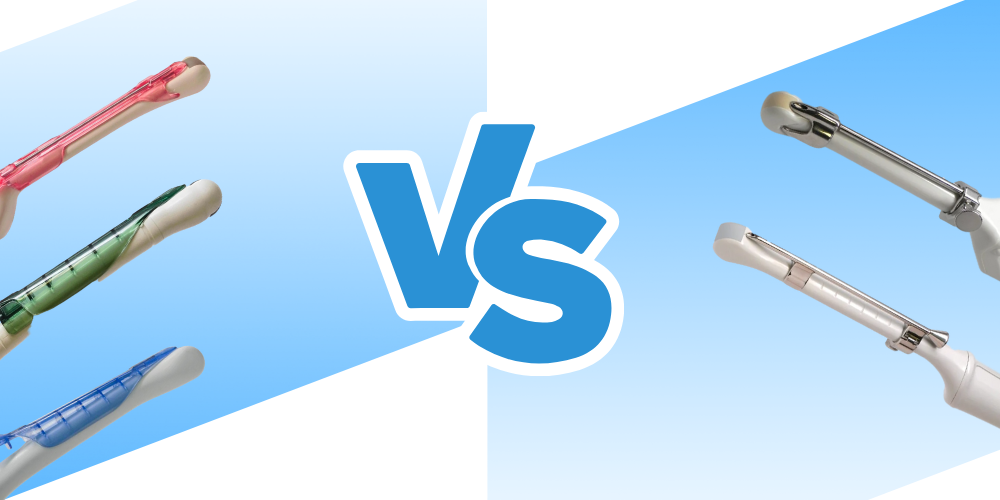In the world of in-vitro fertilization (IVF) and biopsy procedures, precision is paramount.
Ultrasound-guided biopsies and interventions require utmost accuracy to ensure the best outcomes for patients. One critical component of these procedures is the needle guide, particularly in ultrasound-guided endocavity procedures.
Today, we delve into a comparative study of disposable and reusable endocavity needle guides, shedding light on their advantages, disadvantages, and the factors to consider when choosing between them.
The Role of Endocavity Needle Guides
Endocavity ultrasound probes are instrumental in examining internal organs, such as the prostate or uterus. In these procedures, clinicians need to guide biopsy needles with pinpoint accuracy. This is where endocavity needle guides come into play. These specialized tools help clinicians maintain precision by ensuring that the needle follows the same path as the ultrasound beam, making accurate targeting possible.

Disposable Endocavity Needle Guides
Disposable needle guides offer several advantages in medical settings:
Hygiene: In IVF centers and urology practices, minimizing the risk of contamination is crucial. Disposable guides are used only once, reducing the potential for cross-contamination or the spread of healthcare-associated infections (HAIs).
Convenience: With disposable guides, there's no need for cleaning or sterilization, saving valuable time and resources in busy medical facilities.
Consistency: Each disposable guide is brand new, ensuring consistent performance without wear and tear.
However, it's essential to consider the environmental impact of disposable guides, as they can contribute to medical waste.
Reusable Endocavity Needle Guides
Reusable needle guides are known for their durability and sustainability:
Cost-effectiveness: Over time, reusable guides can be more cost-effective than their disposable counterparts. They can be sterilized and used for multiple procedures, reducing the need for frequent replacements.
Environmental Considerations: Reusable guides generate less medical waste, making them a more environmentally friendly choice.
Versatility: These guides can be a versatile addition to any medical facility, as they can adapt to various clinical scenarios.
Factors to Consider When Purchasing Endocavity Needle Guides
When deciding between disposable and reusable endocavity needle guides, several factors come into play:
Budget: Consider your facility's budget and the long-term costs associated with needle guides. Reusable guides may require a larger initial investment but could be more cost-effective over time. However, it should be noted that choosing reusable needle guides means that your facility will also have to purchase high-level disinfection equipment to sterilize them, thus adding an increased cost.
Hygiene Requirements: Depending on the infection control protocol of your facility, disposable guides may be the preferred choice due to their single-use nature. For many IVF practices, it is more efficient to use a needle guide and then dispose of it so that clinicians can move through procedures faster. If not, you will have to factor in sterilization time for your reusable guides.
Environmental Impact: Take into account your facility's commitment to sustainability. Reusable guides are more eco-friendly, while disposable ones contribute to medical waste.
In the world of endocavity ultrasound procedures, the choice between disposable and reusable needle guides isn't a one-size-fits-all decision. Each has its advantages and disadvantages, and the right choice depends on the specific needs and priorities of your IVF facility or urology practice.
Ultimately, whether you opt for the convenience of disposable guides or the sustainability of reusable ones, the key is to ensure that your clinicians have the tools they need to perform ultrasound-guided procedures with precision, accuracy, and safety.
Never run out of needle guides
Click here to shop for needle guides compatible with 17 of the leading transducer brands, including GE, Mindray, and Samsung ultrasound probes.








